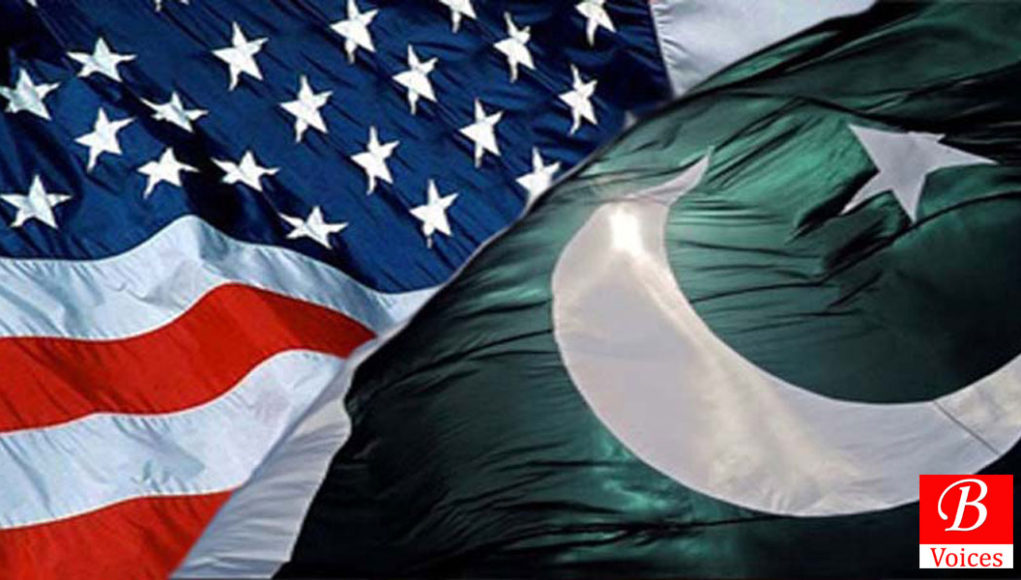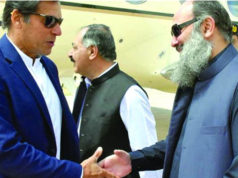Ayaz Ahmed
US President Trump seems to have decided to pressurize Pakistan into doing ‘more’ against certain terrorist and militant groups that are reportedly based in Pakistan’s tribal areas. Like its predecessor, the Trump administration sounds somewhat doubtful of Pakistan’s military actions against the alleged sanctuaries of the notorious Haqqani Network in North Waziristan.
The US has, therefore, decided to slap some obstructive conditions on financial assistance to Pakistan until Islamabad starts ‘visibly’ taking stringent measures against the militant outfit.
In this context, the US House of Representatives has recently passed a sweeping $666 billion Defence Policy Bill. The bill provides $47.4 billion in both regular discretionary and Overseas Contingency Operations (OCO) funding. Within this amount, $12 billion has been earmarked to support military operations and assistance in areas of spiralling conflicts, such as Iraq, Afghanistan and Pakistan.
The text of the bill is rather unfavorable towards Pakistan. It includes severe provisions which make civil and military aid to Pakistan contingent on stopping Islamabad’s alleged support to the Haqqani Network and other hardened terrorist outfits based in the Pak-Afghan region.
Presumably, the powerful Indian lobby in Washington played the overriding role in getting the bill passed in order to dramatically reduce the US economic and military assistance to Pakistan and label Islamabad with terrorism. The US has also withheld $50 million in Coalition Fund Payments that were due to Pakistan. The funds cover the costs for military operations that have been undertaken to ensure security within the country and quell militant groups from attacking US forces in Afghanistan.
Unfortunately, our inept decision-making quarters often neglect the fact that the US foreign policy is largely premised on the fundamentals of the realistic theory of international relations: fostering national security, maximizing national interests and maintaining American hegemony across the globe at any costs. The US economic and strategic partnership with developing countries of Asia has been chiefly calculated to attain these objectives since the end of the Second World War.
Interestingly, after achieving its targets, Washington tends to leave its partners in the lurch as it did to Pakistan after the crushing defeat of the Soviet Union in Afghanistan in the early 1990s.
Though the US is an invincible hegemonic power in the Western Hemisphere, it has burgeoning economic and strategic stakes across the planet to impede the military rise of a potential competitor. To make the most of these grandiose objectives, all the US administrations dexterously adopted the deliberate policy of economically and militarily supporting Pakistan so as to encircle and contain the former USSR from spreading its communist wings across Asia.
The US funneled military hardware and economic assistance to Islamabad in the 1950s and the 1980s in order to contain and defeat the Soviet Union. More importantly, the Bush administration termed Pakistan as the most-allied ally because it direly needed the military and intelligence assistance of Islamabad in its open-ended military annexation of Afghanistan.
Though the US has militarily assisted Pakistan since the 1950s, the former systematically avoided backing up the latter in the Indo-Pak wars of 1965 and 1971. After the fateful downfall of the Soviet Union in the early 1990s, the US even resorted to imposing economic and military sanctions on Pakistan on the pretext of Islamabad’s clandestine efforts towards building nuclear bombs. This begs a major question: why didn’t the US militarily shore up Pakistan against India in the above-mentioned wars despite being a close security partner of Islamabad through CENTO and SEATO?
Both the Pentagon and Capitol Hill were fully aware that the US would require Indian military assistance in South and East Asia to contain China after the collapse of the Soviet Union anytime in the future. The Indo-US strategic partnership, forged from 2005 to 2008, and Washington’s bid to get India included into the Nuclear Suppliers Group (NSG) corroborate US apprehensions of China’s military rise in the past. Such American policies of using Pakistan to contain its adversaries and then leaving Islamabad in the lurch have turned out to be the major irritant that often brings the bilateral relations on a downward trajectory.
To maximize its China-containment policy, the US has adopted rather a discriminatory nuclear policy by providing all-out civilian nuclear assistance to India. Such American support has ominously helped India acquire naval nuclear capability, thereby expediting the nuclear arms race in South Asia. More alarmingly, the sense of potency has emboldened the Indian Army to frequently stir up dangerous skirmishes on the volatile Indo-Pak border and continue its brutal suppression of the armless Kashmiris in the Indian-occupied Kashmir. The US silence on the ongoing Indian saber-rattling and belligerency make Pakistan suspicious of the deepening Indo-US bloc in Asia against China at the cost of Pakistan’s security.
What is more worrying is that the Trump administration has lately decided to increase Indian military footholds in war-torn Afghanistan. The Pentagon is considering permitting India to deploy some 15,000 Indian troops in Afghanistan that are primarily intended to outweigh the growing Chinese presence and Russian influence in the terror-infested country. RAW, the premier Indian intelligence agency, will ostensibly bank on New Delhi’s increased military tentacles in Afghanistan to ramp up its support to Pakistani terrorists and insurgents ensconced in eastern Afghanistan.
The US attempt at assigning a bigger role to India in Afghanistan is quite deliberate and mainly designed to attain some geostrategic and geo-economic designs. The Indo-US duo is bent upon derailing CPEC and other Chinese connectivity initiatives in the region by financing and fanning terrorism and insurgency in Pakistan and Afghanistan. What India should be cognizant of is that the US will pivot back to Europe after making strides in militarily containing China in Asia.
The US has continued to cast doubt on Pakistan’s military actions against the alleged hotbeds of the Haqqani Network in North Waziristan. The active Indian lobby in Washington has made a prodigious success by making military assistance to Pakistan contingent on Islamabad’s stern measures against the operatives of the Haqqani outfit.
The Pentagon appears to have adopted an unrealistic and impractical policy towards the desultory war in Afghanistan. How can Pakistan eliminate battle-hardened terrorists and militants when they are warmly welcomed and sheltered by the Indian and Afghan intelligence agencies across the porous border? Thus, it is futile to double down pressure on Pakistan to stamp out Afghan insurgents on its soil while providing a clean chit to India to shelter, train and equip those Pakistani terrorist fugitives who are currently hiding in Afghanistan.
It is time both the civilian and military leaderships in Islamabad accepted the unfolding political and security dynamics in the region and accordingly revisited the country’s confused and obscure foreign policy. It is now an open secret that the US is strategically and economically aligned with India to prevent the increasing Chinese economic and military footprints in South and East Asia. The ongoing cold war between China and the Indo-US bloc is likely to further complicate the protracted Afghan insurgency and the security dynamics of the already volatile South Asian region.
While it is of importance that Islamabad should maintain working economic and security relations with the US, it should reduce its heavy economic reliance on the US, the IMF and the WB to chart an independent foreign policy in the region. Such economic self-reliance will help us further foster our ties with China and cultivate robust economic and Defence partnership with emerging Russia.
Writer is a featured columnist for Balochistan Voices. He also writes for The News and other publications. He can be reached at [email protected]
Disclaimer: Views expressed in this article are those of the author and Balochistan Voices not necessarily agrees with them.
Share your comments!








